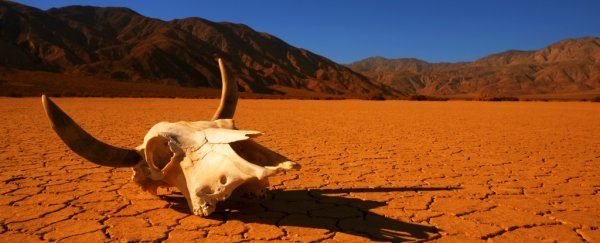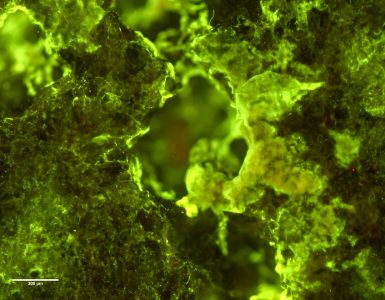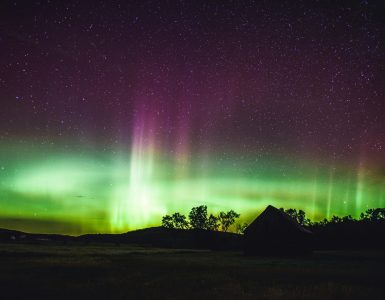by Karma Lei Angelo
Danger zone
A group of conservationists have purchase another massive amount of land in South America. This purchase is added to the Amazonian Protection Zone (APZ), a growing swath of rainforest these individuals are hoping to save.
They deploy a series of aviary drone-bots to cover the newly acquired land mass. The robots will set up remote sensors along a predetermined grid and connect with the already established grids in the existing zone. These sensors will monitor and track thermal patterns, document acoustical changes in the area, and capture 360-degree images of plant, animal, and insect activity.
Using artificial intelligence software, the conservationists will be able to monitor and track an individual animal’s moments through fur pattern and facial recognition software, determine changes in the animal’s activity due to territorial threats, and predict migratory patterns and feeding ground locations. The software will also be able to detect any illegal human activity—all this while leaving the rainforest untouched by any other human interference. The AI will be able to monitor every animal and plant around the clock, all year long.
While the drones are being deployed from the monitoring station, a proximity sound buzzes and pops up on the computer. The AI alerts the scientists to some unusual activity on the eastern established edge of the APZ. A few clicks later, and they see poachers enter and capture an endangered jaguar. Within minutes, the conservationists have alerted local authorities and within the hour the poachers are apprehended. The jaguar is returned to its habitat.
Is this the future for conservationism? Can measures such as this help slow down or even stop certain animals from going extinct? Is technology the answer?
A brief history of the future
With only a few weeks into the new decade, trending news articles are bleak:
– 1 BILLION animals feared dead in Australia’s massive brush fires.
– Many more species, such as the Northern White Rhino, are now extinct as of 2019 due to manmade habitat loss, changes in climate, and illegal poaching.
– Manmade fires, deforestation—and to some degree, politics—have taxed the Amazon rainforest in South America.
– Weather records are being broken every single day around the globe, forcing some small carnivores further north into Canada to find more sustainable habitats as climates continue to change.
– A three-year global bleaching event from 2014-2017, caused by excessive ocean warming, critically stressed more than 75% of the world’s coral reefs.
Even bleaker are the multiple reports, studies, and news articles of a sixth mass extinction currently underway. This Holocene, or Anthropocene, event is significantly contributed to by modern human activity: overpopulation, destruction of natural resources, overfarming, fossil fuel consumptions, overfishing, pollution neglect, longer life expectancies—the list goes on.
If the United Nations does succeed in having countries set aside 30% of their lands and seas for conservation by 2030, would waiting another decade still push certain species beyond the extinction-inevitable threshold? What, then, can humans do to possibly stop, reverse, or slow down an apocalyptical mass extinction?
How can technology help?
Bank deposits
One potential solution with animal conservation and protection is through biobanking.
In the winter of 2008, the Svalbard Global Seed Vault began accepting deposits and seed sample in the hopes of protecting and preserving the “gene diversity of major food crops”. Currently, there are nearly 1.5 million seeds within the facility, with the ability to hold 3 million more. Should weather patterns or other natural events wipe out regional crops and food supplies, seed banks will be able to replenish certain foods.
Similar to this reservoir for flora, there are several DNA banks for fauna. The largest of these banks, the Frozen Zoo located in California, has more than 13,000 samples of semen, blood samples, oocytes, and embryos for more than 7,000 endangered and threatened species.
However, unlike dry seeds, storing DNA samples is more difficult. Due to ice crystals degrading animal cells, cryoprotectant fluids must be used to protect the cellular structures and molecules of the samples. This can not only become costly over time, thawing procedures can become challenging. And, as animal populations decrease, gene pool diversity decreases. Inbreeding and deformities can and do result.
One solution to the decreasing diversity within a species is through gene therapy. Advances in CRISPR-based tools allow scientists to finally edit and manipulate DNA. It is now possible to change the color of a butterfly’s wing, add drugs through chicken eggs, and sterilize farm-raised salmon to avoid potential breeding hazards with wild salmon.
With new CRISPR-Cas9 technology, scientists can now do these procedures in half the time as a decade prior, cheaper than ever before, and more accurately than previous DNA-editing techniques. It is likely, with the help of CRISPR-Cas9, DNA banks can now successfully save many at-risk species or eliminate any potential birth defects from such a shrinking gene pool.
Sound checks
Another potential way technology can help with animal conservation and protection is to monitor and eliminate man-made noise in protected wildlife areas. Noises from “development activities, traffic and the extraction of natural resources” threaten plant and animal species across the world. Researchers examined noise pollution in several locations and determined that “63% of the protected areas were twice as loud as they should be.”
Why is sound important? It can affect how birds find mates and reproduce, how bats or dolphins hunt for prey, how other marine invertebrates display anti-predator behavior, and how mammals assert their dominance. Noise pollution is changing the behaviors in animals and directly impacting populations.
Conservationists have created sound libraries from animals around the world, including bear roars, blue whale songs, bird chirps, and primate calls. One such location called the Macaulay Library houses more than 150,000 recordings of over 9,000 species.
By using artificial intelligence, scientists can now take sound libraries and compare them with data collected in the wild. Algorithms can document when birds arrive to breeding grounds and determine if their territorial ranges have been altered due to warming climates. “Acoustic monitoring methods” are also helping to track and identify the African forest elephant, an endangered species. Sensors currently monitor nearly 1,250 square kilometers (roughly 485 square miles) of African forest to track where the elephants roam.
Conservationists can also use audio sensors to listen for human activity such as chainsaw activity, illegal logging, and gunfire in real-time. They can track poachers by creating a system to predict potential trafficking locations and remove traps set to kill or capture any animals.
Covert protection
A third potential way technology could help is by offering advanced protection through GPS tracking, satellite imagery, and drone surveillance.
GPS trackers on wildlife is becoming increasingly popular as a reliable way to document animal migratory patterns. AI algorithms are capable of learning and predicting where animals will return or migrate to, thus providing a better way to conserve habitats. Data collected can also be used to measure animal behavior, community interactions with other tagged animals, and the habitat surroundings where animals live, breed, and mate.
Satellite imagery can also provide AI technology with historical land use data and predict areas of potential deforestation and mass bleaching events of coral reefs. Most data collected from high-resolution satellites is free for use. Scientists can use lidar to measure heights and structures of forests and estimate annual differences in areas. Satellite imagery can also be used to track marine and terrestrial wildlife populations by documenting growth or decay patterns in herds and flocks.
Unmanned aerial vehicles (UAVs) provide scientists with never-before seen images of bird habitats and behaviors. Driver-controlled drones are slowly being replaced with autonomous ones which can maneuver easier, grasp things in midair, and even perch in trees. These drones can pick out heat signatures and distingue them as unique as fingerprints.
Spreading the Message
Perhaps one of the best ways technology can help is simply by making people aware and self-conscious through social media.
Some celebrities such as Wang Junkai, one of China’s most famous pop stars, share their public outreach efforts through social media. Junkai has more than 70 million followers on Weibo and uses the platform to reach Chinese youths about environmental issues, including wildlife protection.
And while social media has given rise to anti-science activists on topics such as vaccines and the shape of the planet, legitimate information can reach netizens quicker. Government websites provide many data sets for free. Science sites and environmental organizations share the latest research breakthroughs or conservation efforts. Hashtags can easily connect users to similar matters or concerns.
Perhaps the best way to combat the next mass extinction is through simply educating the public. Perhaps with an increase in individual awareness and more pro-activity from collective organizations, the world will see a decline—or better, a reversal—in the rate of destroyed habitats and a resurgence in wildlife populations again.










Add comment